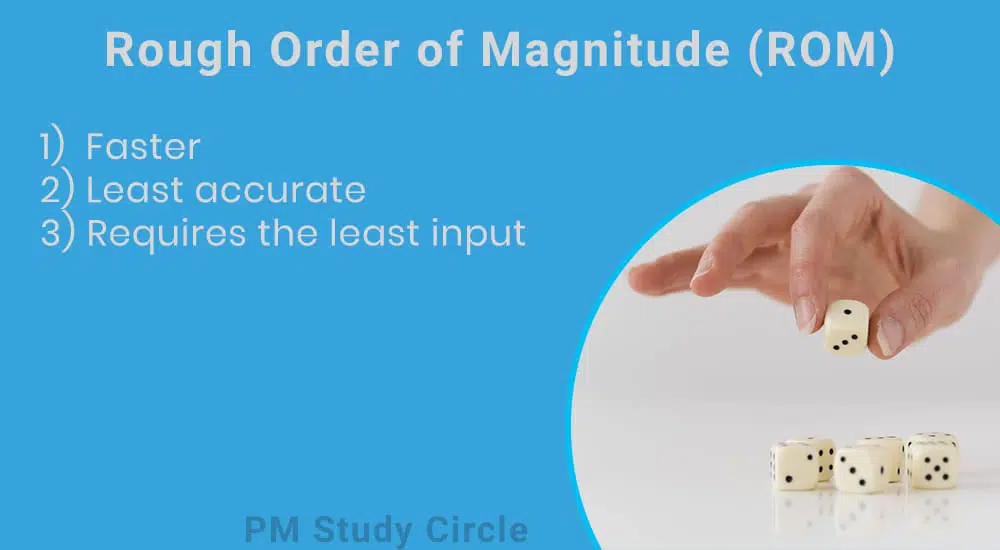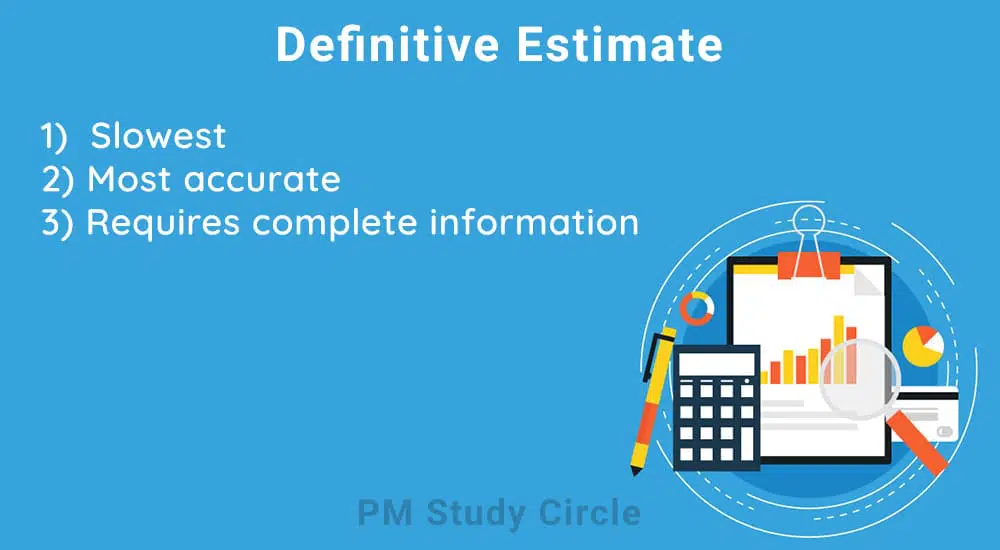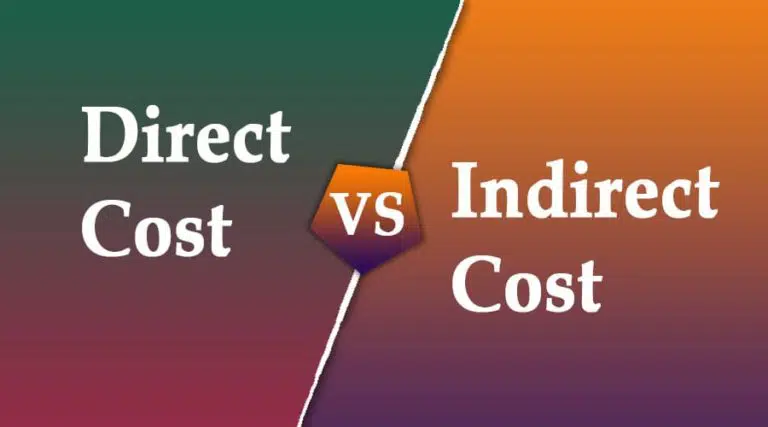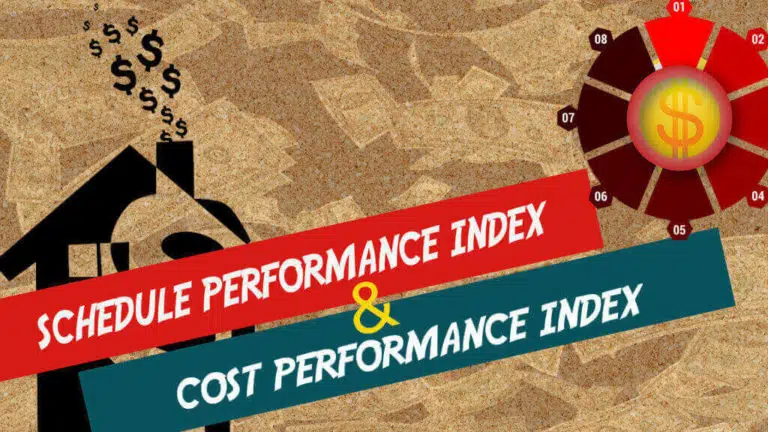Cost estimate is a key project management process that helps management decide whether to proceed with the project and arrange funding. Rough order of magnitude (ROM) and definitive estimates are techniques to find cost estimates for your project.
ROM and definitive estimates are used for different purposes and at different times. The accuracy of these estimates depends on the quality of data available, the historical information, and the estimators’ knowledge and expertise.
You use a rough order of magnitude when little or no information is available and a definitive estimate when you have a clearer picture.
This blog post will discuss ROM and Definitive estimates, how to calculate them, and tools and techniques you can use to find these estimates.
What is a Rough Order of Magnitude (ROM) Estimate?

Rough order or magnitude estimates or ROM are the approximate cost estimate of the project that is determined at the beginning or early stage of the project life cycle when no or few project details are available.
ROM has an accuracy range between –25 % and +75%.
Management uses this estimate in feasibility studies and when developing a business case for strategic decisions during project selection.
A rough order of magnitude estimate is a general estimate that the project manager quickly guesses for high-level decision-making purposes. The accuracy of this estimate is poor, but management gets an idea about the cost and effort required for the project.
How to Prepare for a ROM Estimate
Since the rough order of magnitude estimate is a rough idea, stakeholders expect variation, and no one questions the accuracy of data obtained from this ROM method.
However, if you have been asked to provide a rough estimate for any project, you should provide the most accurate data possible. You will gather the project information and brainstorm with cost-estimate experts to determine the ROM estimate.
Although a variation is acceptable, it should be limited. For example, 500,000 USD is not an acceptable estimate if the actual project cost is 100,000 USD.
This estimate is sometimes known as a “ballpark estimate” because it shows management and/or the clients the rough project budget.
This estimate is useful when you have little information or management urgently wants to know the approximate project budget. This estimate is also used during the project selection process.
Once you get more information, such as the detailed scope of work, you can replace this estimate with a better one, i.e., a definitive estimate.
Tools & Techniques for Rough Order of Magnitude (ROM) Estimates
You can use the following tools and techniques to determine ROM estimates:
- Analogous Estimate: In this technique, you compare the current project with similar past projects. By drawing parallels and considering the differences, you can estimate the current project’s magnitude. This method uses historical data and expert judgment.
- Top-Down Estimate: In this technique, you break the project into smaller components and assign rough estimates to each component. This method is useful when you have a high-level understanding of the project but limited information on specific tasks.
- Expert Judgment: In this technique, field experts provide valuable insights based on their experience. By consulting with experts on the type of project at hand, you can gain valuable input for your ROM estimate.
- Reference-Class Forecasting: In this technique, you compare the current project with similar completed projects. This method relies on historical data and aims to avoid optimism bias by considering the actual outcomes of past endeavors.
Rough Order of Magnitude (ROM) Example
Let us say your management wants to bid for a construction project to build a 20-story building, and they want to know the approximate budget to decide if they should proceed with the bidding.
You are an experienced project manager and have handled several similar projects. You go to your organizational process assets and find a similar project. You review an old project estimate and, using expert judgment, guess your current estimate and provide it to your management.
What is a Definitive Estimate?

Definitive estimates provide the most accurate results because the deviation is far less (i.e., –5% to 10%). You can use this estimation method when project details are available. A definitive estimate is sometimes known as a “final estimate.”
Calculating a definitive estimate takes time and effort, but the results are reliable, and management will approve the project budget based on the estimate obtained from this cost estimation method.
You use this method when you have a well-defined scope of work. This estimate helps you determine the cost baseline, schedule baseline, and project budget.
The definitive estimate provides reliable data you can trust and communicate with your project stakeholders.
How to Prepare for a Definitive Estimate
Definitive estimates provide accurate results; a variation of over 10% is unacceptable.
If the management has asked you to provide an accurate budget for the project, you will use this method and ensure the data provided is correct considering all realities.
You will gather all project information, such as direct and indirect costs, and add the inflation factor if the project duration is longer.
Tools & Techniques for Definitive Estimates
You can use the following techniques for definitive estimates:
- Bottom-Up Estimate: In this technique, you create a detailed work breakdown structure (WBS) of the project and estimate the cost for each work package. You aggregate these estimates to provide an accurate project estimate.
- Three-Point Estimate: In this technique, you provide more accurate estimates. By providing the most optimistic, pessimistic, and realistic estimates for each task, you can find the range of your project budget.
- Vendor Quotes and Bids: In this technique, you use detailed submitted quotes provided by external vendors and/or suppliers. Vendors provide specific cost and time estimates based on detailed project specifications and requirements.
Definitive Estimate Example
Your organization gets the project, and now they want the exact cost to assign the project budget and start the project. So, you break down the work to the activity level, assign resources and effort, and find the cost of each activity.
Then, you add the cost of all activities and get the project budget.
You have used the bottom-up cost estimation technique and provided the most accurate budget estimate.
FAQs
1. When is each type of estimate used?
ROM estimates are used to make feasibility decisions, develop a business case, perform cost-benefit analysis, and perform project selection exercises. Definitive estimates are used in planning to set budgets and control project finances.
2. What factors influence the accuracy level?
The availability and quality of project data significantly impact ROM and definitive estimates. More detailed information leads to higher accuracy.
3. How can I improve the accuracy of my ROM estimates?
Use historical data of similar projects, industry benchmarks, and expert opinions. Consider risks and uncertainties to incorporate contingencies into your estimate.
4. What are the consequences of inaccurate estimates?
Underestimating costs can lead to budget overruns and project delays. Overestimating costs can lose business opportunities or create unnecessary pressure.
5. What are some key considerations when transitioning from a rough order of magnitude to a definitive estimate?
As the project progresses and more information becomes available, you should transition to a definitive estimate for better cost control. Involve stakeholders, refine estimates using historical data, and apply techniques (e.g., bottom-up estimate).
Conclusion
The rough order of magnitude (ROM) and definitive estimate provide the project-cost estimate. However, you will calculate them at different points of the project lifecycle, and they will serve different purposes.
ROM is calculated at the beginning of the project to give the project sponsor and/or management an idea about the project’s cost. The definitive estimate provides them with the exact cost needed to complete the project.
This topic is important from a PMP exam point of view.

I am Mohammad Fahad Usmani, B.E. PMP, PMI-RMP. I have been blogging on project management topics since 2011. To date, thousands of professionals have passed the PMP exam using my resources.







